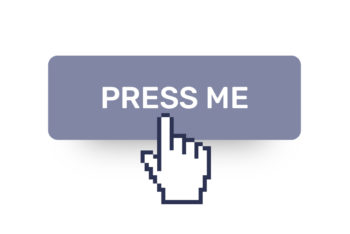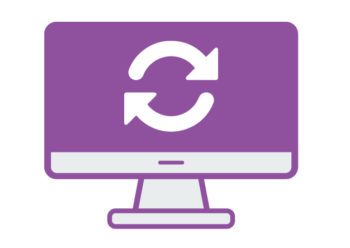Fundamentally, design thinking is an iterative process used to strategically challenge assumptions, understand the user, and reframe problems in order to generate new ways of thinking about how we might solve them. Empathy is at the very core of design thinking and is a key factor in helping the designer obtain a factual, nuanced understanding of the people we’re creating products and services for. Design thinking encourages us to question everything, especially our own assumptions, in our quest to find meaningful solutions to frustrations and impediments to using a product.

What is Design Thinking?
The Design Thinking Process
Even though design thinking is a non-linear path, empathizing is usually the first step because it’s at the very core of what this process is all about. But what does this mean, exactly? The goal is to gain a deep understanding of the people you’re designing for, and there are a bunch of different ways to do that. Budget, time frame, and available resources can impact the number of techniques you use to achieve this goal, but two of the most common methods are user studies and user interviews. User studies can be “in the field” observational studies, like observing admins use a program, or “secondary research” usually done online. User interviews are exactly what they sound like, and can be conducted with primary stakeholders, end users, and everyone in between.
Defining the problem is usually the next stage of the design thinking process. This is an important way of guiding your decisions, and keeps you on track among a myriad of inevitable distractions. This stage builds upon the observations you collected in the empathizing stage. There are a number of exercises that are used to help define the problem. Empathy maps, for example, are fairly common and help the designer gain greater insights by trying to depict what the user says, thinks, feels, and does in a given scenario. POV (point of view) statements can also be useful, and combine user descriptions, needs, and insights into a concise, actionable statement.

The next step is ideation. The more ideas generated, the better, and nothing is too far-fetched to begin with. This stage is more about generating ideas, than creating polished solutions, so it’s best not to worry about viability just yet. Brainstorming is one of the most widely used methods for this phase. But while it’s popular, it’s not necessarily the best, as it tends to reward the most vocal, extroverted members of a group. That’s why it can be helpful to combine it with other exercises. A good one would be “lightning demos”. This is similar to comparative analysis and asks a group of people to look at similar examples (not necessarily in the same industry) for creative inspiration to put their spin on.
Prototyping and iterating is the next phase and is a quick and cost-effective way of getting our designs out there. The key is to keep it simple, especially in the beginning. This means making low-fidelity mockups first, focusing on high-level page layout, blocking, and site flow. Designers probably won’t nail it the first time around, and it is important to remember that this is an ongoing process of generation and refinement. After this is established, we can start to make it look more like the real thing by increasing fidelity. This can mean adding branding elements, images, and content, and helps give a clearer picture of what the finished product will be like.

The final stage is testing, and it’s one of the clearest ways of telling if we’ve done our jobs right. User testing is maybe the most straightforward phase, but it’s a crucial one nonetheless. User testing gives us real feedback about which features users love and which ones they don’t. It gives us solid ground for iterative improvements and ultimately helps save time and money down the road by confirming a product's viability.
Design Thinking Solves Problems
From a business standpoint, the result of all the hype around design thinking is that people are realizing that anyone, regardless of their industry, can benefit from the creative problem-solving methods that make up design thinking. These techniques can be used effectively by managers, executives, designers, and anyone else with a stake in product development. It can help businesses grow their markets, reimagine their product offerings, offer greater value to customers, and stay relevant through innovation. Simply put, design thinking can be applied to basically anything that needs to be improved, and can help make everyone’s lives a bit easier.
In conclusion, design thinking is an approach to innovation that centers around the lived human experience. It helps teams get closer to achieving the intricate balance between what is technologically doable, what is feasible for businesses to produce, and perhaps most importantly, what makes sense to the end users. That being said, human-centered design or “design thinking” is never a stand-alone process, and is usually paired with user experience. Good design can be characterized by providing intuitive and satisfying experiences, and design thinking help us achieve that.



